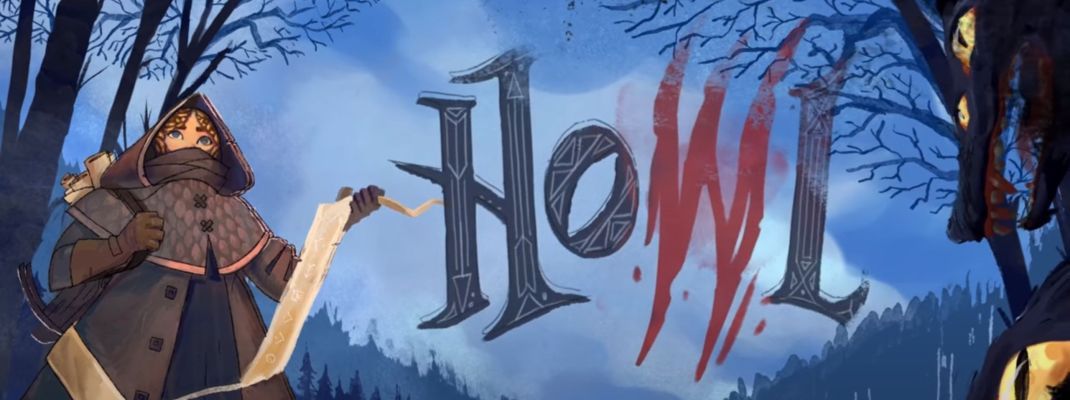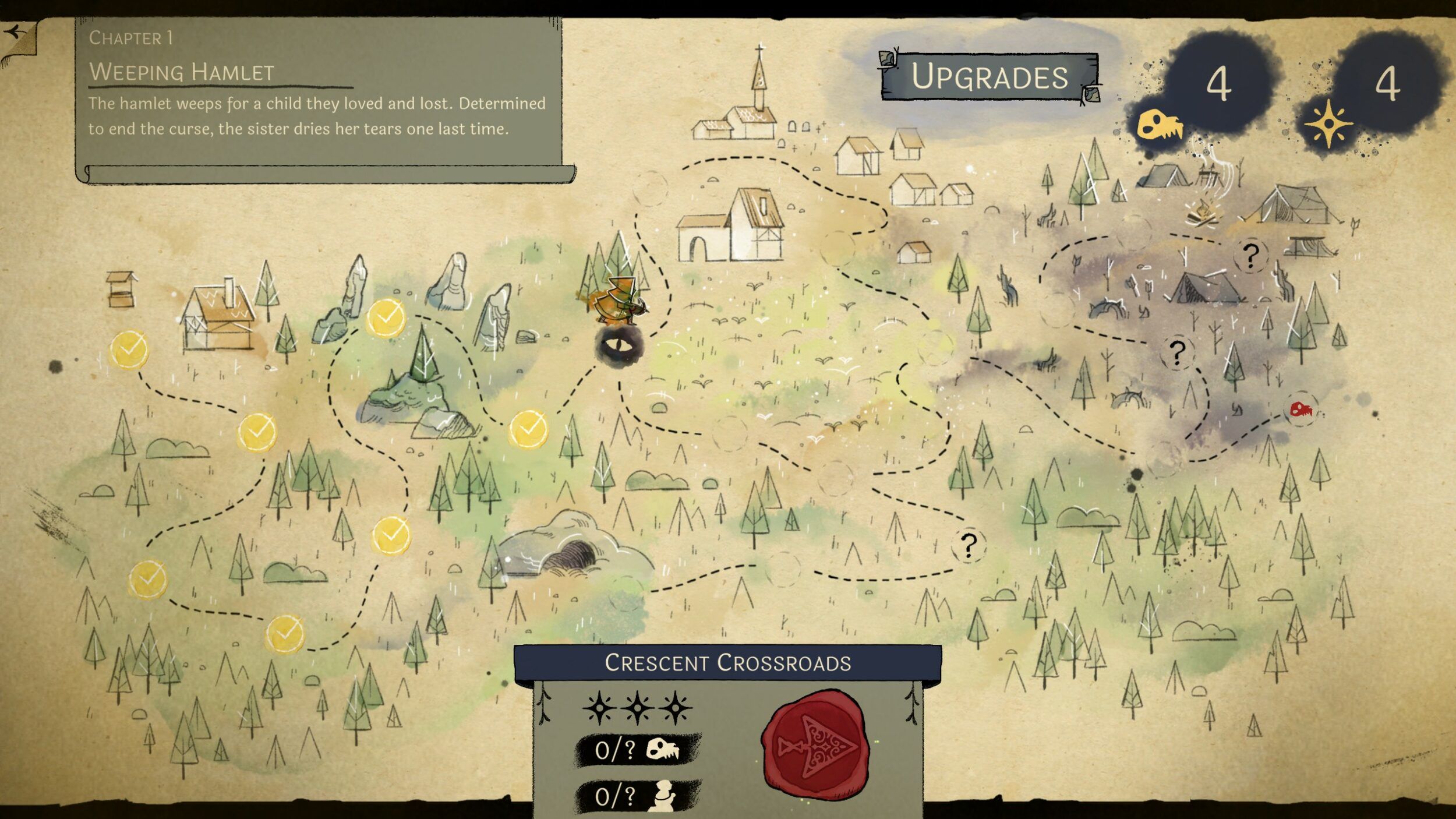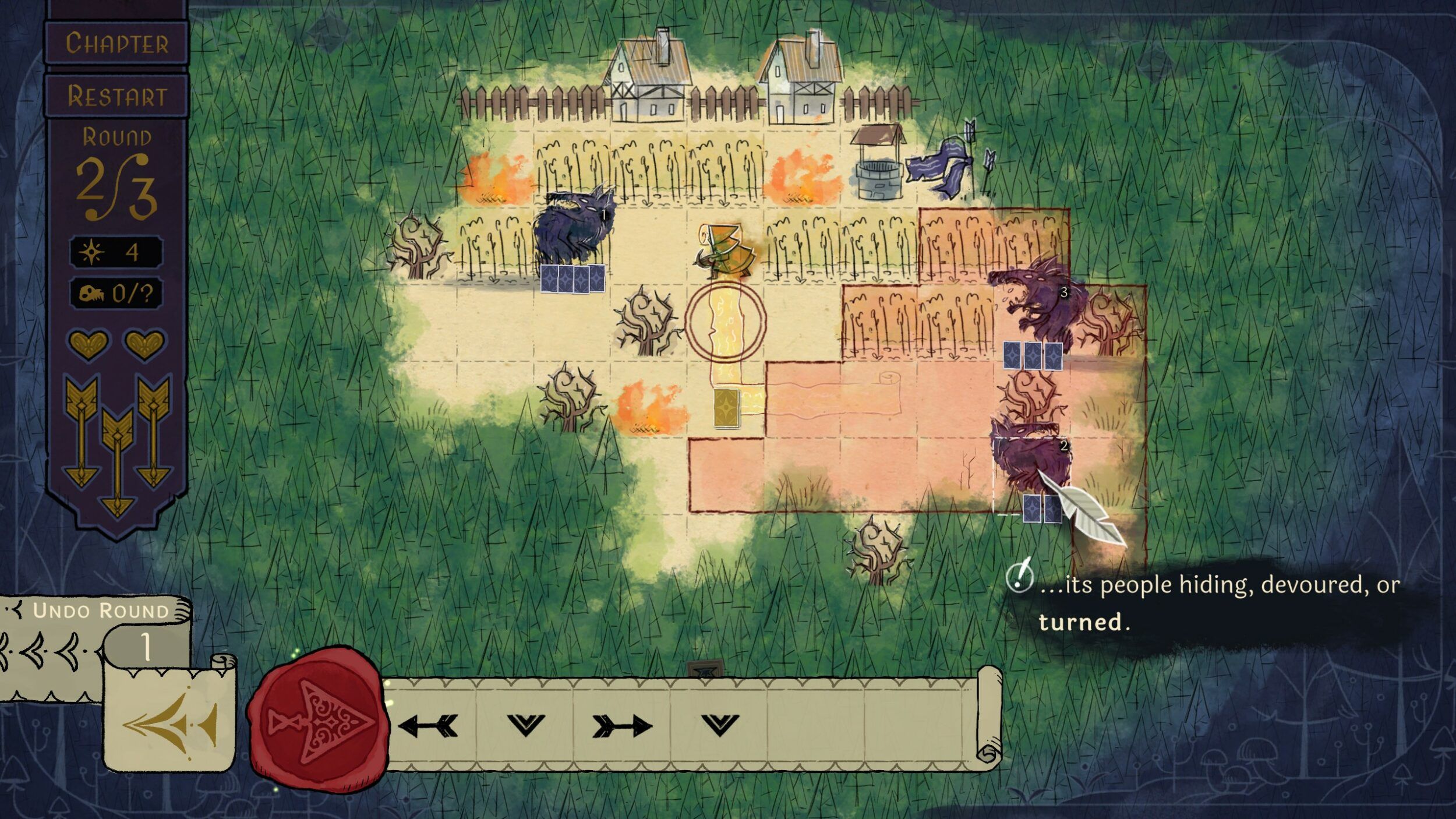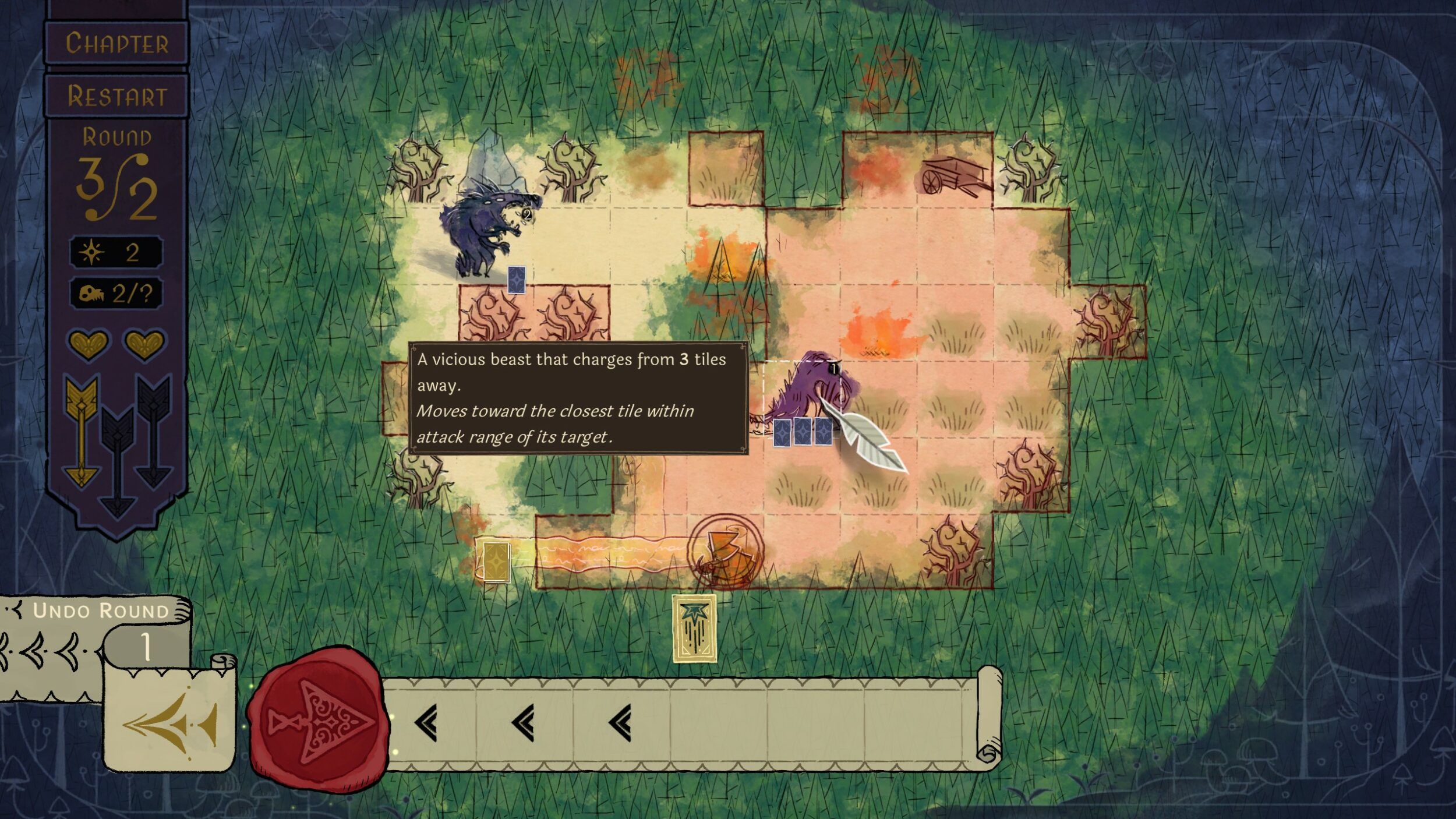As we step further into the future, the last year of games contained a surprising amount of callback to classical antiquity. Titles like Pentiment, Potion Craft: Alchemist Simulator and even the upcoming Inkulinati all feature Medieval themes and aesthetic. It seems in the face of AI-enhancements and futuristic mechanics, many indie titles are focusing on simplicity. Less is more in some cases and what better way to thematically adhere to those principles than by framing them in the context of the Middle Ages? Looking to add a fresh face to the genre is Howl: a turn-based tactical folklore title set in a world of living ink. It's a title with compact design and pleasing minimalist ink aesthetic. In a world plagued by ferocious beasts that can turn humans to monsters with just a howl, players take on the roll of The Prophet. Having been born deaf, she has unique protections against this curse. Only The Prophet herself knows what will play out as her quill meets parchment in preparation for her journey. Upon awaking one morning, our protagonist's brother has gone missing. Hoping to avert his fate, she sets out into the world with a crafted prophecy that will cleanse The Howl. The title features an interesting premise for turn-based strategy, yet faces difficulties in game design that hold opportunity in its current demo stage.
As The Prophet begins her journey through the countryside, players are met with an overworld map that gives the choice of moving forward towards the end or branching off to side paths for additional resources. There's opportunity to move back and forth between levels. In fact, Howl asks that players revisit previous levels to complete all objectives and earn maximum rewards. There are a couple of resources players must manage as they make their journey. The first is Confidence that's earned by finishing a level within the Prophecy Round Value. This is to say if a level shows a number of rounds, more resource is accumulated if the level is finished within that number. A possible amount Confidence is also shown within the UI indicating how much a player can gain during the level. Depending on the level, there may be civilians to rescue that would add more Confidence to the end total. Confidence is what's used to level up The Prophet's abilities. While players are able to take as long as they need, one less Confidence is gained for each additional round taken. The second resource to manage are Skulls, which are gained from killing enemies in a level. It's not always necessary to kill every enemy to pass a level, but Skulls do come in handy by unlocking different areas of the map and additional skills. Howl reminds the player that gaining all Confidence and Skulls is not always possible in a single attempt or without specific skills. Sometimes you may need to go back to a level to get enough Skulls to unlock a piece of the map. A replay of previous levels for additional Confidence can help attain those last few points for leveling up. Players are encouraged to replay levels to complete them quicker or to kill all enemies. While I'm someone that can appreciate replay requirements, Howl's early gameplay mechanics don't always respect the player's time.
Starting a level places The Prophet into a combat encounter, suddenly finding yourself surrounded by finely-painted trees and solitary beauty. Howl does a great job of committing to the Medieval-folk aesthetic. Wandering through these areas can sometimes feel lonely as paths forward are searched for. The Prophet is on a dangerous journey and will encounter hardships along the way. The title sets the scene and transports players to this terrifying reality where humans are powerless to stop The Howl. As combat opens, the level shows a grid to navigate. Some levels require that all enemies die, but other levels require the player to touch the exit tile (indicated by fletched arrows and a tattered banner). The Prophet has many actions she can take -- from movement to using combat skills. When choosing skills, you must also input the direction we want the skill to target. For example, there are limited arrows that can be used at any time, but you also need to input what direction to fire them. The early game starts with a few actions indicated by a parchment scroll at the bottom of the screen. Each empty square available in the scroll indicates an action to be taken. Players can upgrade the number of actions through their travels and collection of resources. There's no required order of taking actions and players can create whatever combination of actions desired. There will often be strategy involved when taking actions, however, as skills rely on timing and players will need to anticipate enemy movement.
Skills are powerful abilities that are found and unlocked on the map. Each skill is associated with a slot on the action scroll and can only be used there. This means that players must be careful about when to use actions on enemies as they enter range. It provides an interesting layer to combat: not all skills are always disposable and one must be more tactical about actions. Yet this mechanic conflicts often with enemy mechanics and movement. You're free to move about the grid, but once an enemy's line of sight is entered, they will begin moving immediately after your own actions. This was something I had to figure out because it's not explicitly stated and would find myself needing to pay closer attention to see that enemies "activate" once you enter their perimeter. Gameplay tips within the demo give minimal information about enemy behavior. Combat is equipped with Prediction Assistance, meaning that enemies and UI elements can be hovered over to read their tooltips. You can see if a beast can charge from far away or if it needs to attack from close range. As actions are selected to place in the scroll, enemies will also add their own actions indicated by cards beneath their model. This shows how many actions they'll take, ignoring if they are killed or forced to skip a turn. Hovering over an enemy also indicates the tile that it's currently targeting. Howl leans into its thematic elements of prophecy by not showing the route enemies take to their destination. It's a gameplay choice that creates frustrating mechanics since players basically have to guess where an enemy will end up.
Game hints that appear early indicate that enemies will always take the most direct route to the player -- yet the game and the player may have different definitions of "direct route." Combat feels like you get lucky when it tries to blend real-time movement with turn-based. Outside of enemy line of sight you're able to move freely, once within enemy line of sight they'll take an action after you -- this is something that works well in a TTRPG (check out the Resident Evil 2 board game, it uses this mechanic) because you have a human player controlling the enemy's direct route and this is often co-signed by other human players. Howl's enemies are AI that choose the best route without any indication of trajectory. This means that you truly have no way of knowing what direction an enemy will approach unless you take advantage of the terrain and force certain trajectories. While this does prompt engaging problem-solving, it also feels wasteful when attacks are input in all directions because you have no idea where an enemy may land on the way to its targeted tile.
At times, I backed myself into a corner to force enemies into a bottle neck situation, yet what I thought would be the most direct path ended up not being their trajectory. Now I've wasted limited ammunition thinking the enemy would have stepped right in front of me, rather than to the side. Both tiles were the same number of spaces away. I was confronted with similar moments while trying to figure out which path an enemy could take towards me, as there were many possibilities. The solution was to end a round early without taking all my actions. This way I can better control enemy movement as they only act as much as the player does. Despite Howl inviting players to replay levels, this still feels antithesis to the reward system in the game since players are given more resources for completing the fight within a number of rounds. It was nice to see unlockable weaponry, like smoke bombs, that allow further control of enemy movement, but this wasn't acquired until I was almost done with the demo. Howl hints that once all the pieces are together in a full game, players will have more control than is initially known.
Howl is a title that has a lot of good ideas, but has implemented them without cohesion. Being unable to track an enemy's trajectory makes the game feel more like a gamble instead of a purposeful tactics title. It plays too heavily on themes of "divination" where players have to take a chance on hitting their target. In its early development stages as it is now, the learning curve demanded of the demo is severe. As I played, I was reminded that all my favorite strategy games didn't hide information from the player -- instead they show us exactly what to expect. The real strategy is using whatever unique tools and abilities that are given. The title should be praised for attempting these varied mechanics, yet success feels more certain in whatever late-game awaits players. Howl has a strong foundation, but could benefit from more intuitive gameplay.




